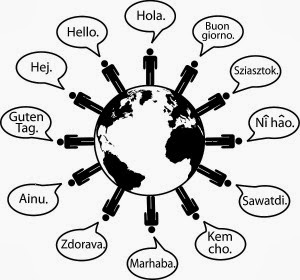Those unfamiliar to the freelance translation profession usually think that freelance translators have more freedom with regard to their working hours and that they can work when and if they want! People seem to be under the impression that working from home without a boss is a wonderful existence!
Time and Time Management are key for the Freelance translator
Now let’s suppose that the freelance translator’s career is well on track with an established client base. Time management now becomes the key to the working life of the freelancer. If time is not managed correctly the life of the freelancer can become a living hell.
Working as a freelancer does not mean disrespecting normal working hours. On the contrary it requires a lot more discipline to organize the working day. If not, it could mean a disorganized working schedule with no personal life.
It often happens that freelancers at the start of their careers, place too much importance on the amount of work they need to do which of course is justified. OK, they have chosen this profession to do what they love, don’t have to go to the office, depend on others, work in other places etc. but there have to be boundaries, limits and rules to this working freedom by establishing concrete working hours that need to be adhered to rigidly. The following are a number of time management tips:What are the working peaks and troughs of a freelance translator's day?
Often the freelance translator works better a certain times of the day. For instance in the mornings between 9 and 12 the translator may work more efficiently so we refer to this period as a peak work time. After lunch, for instance between 2 and 4 we find ourselves more lethargic and lacking energy. How do we organize our working time around these physical peak and trough working times? There are a number of workarounds but a suggestion is to do the more mentally taxing tasks such as translation at peak working times and then other less mentally taxing tasks such as administration and emails between 2pm and 4pm! Its only a suggestion and everyone works differently but its important to find your own rhythm for more efficiency!
How many times should the freelance translator check email?
Its important for the freelance translator to revise emails frequently especially if not doing so runs the risk of missing an important deadline or urgent text to translate, but a tough human habit to avoid is reading mails every time that the email dialogue pops up. Throughout the day this can be very time consuming and much better managed time wise if we revise the emails we receive periodically, say for instance, every two hours in one swoop, so to say. This avoids breaks in concentration and allows the translator to get into "email mode" which in essence is a different thought process than say, translation. I say two hours as a general rule of thumb and I think it’s an acceptable period within which to get back to a client. Alternatively, if the old habit is too hard to break why not program your inbox to “Send/Receive” every two hours.
Freelance translators working with different zones?
Given the nature of freelance Translation work many clients or Translation services companies are located in different time zones throughout the world: it’s important to establish this with the client at the onset of a working relationship. It can work to our advantage but in other cases for instance a Spanish Translator working for an Asian client, the freelancer has to be very clear at the start of the Project about the deadline and take the time difference loss into consideration when establishing it. Another suggestion is for the freelancer to program the email messenger to auto respond to the client or perspective client with the working hours and when to expect a response. This makes the client aware that there is a time zone issue
Freelance Translators should try Not to Work at Weekends?
I understand that this is easier said than done as most freelance translator deadlines tend to be yesterday and are always urgent but detaching from work is imperative to refresh the mind and body leaving us motivated and rearing to go on Monday morning. Granted, there are times where we haven’t planned correctly or a deadline’s urgency is unavoidable and we have to work on a Sunday. However, if this is the case it’s important to re-balance the work play barometer and take some time off on the Monday morning.
Its important to budget our time correctly and dedicate the appropriate amount of time to the multiple facets of Translation freelancer life for instance, Translation, administration, attending seminars, marketing, learning the latest tools etc…... What may help is keeping a task diary. Simply sit down on the Sunday evening and map out the task Schedule for the week while also taking into consideration peak and trough working times. Ensure that the task schedule is not over-ambitious and realistic, leaving enough time for a healthy personal life.
Workloads may also influence the task Schedule for instance, there may be extremely busy periods and tight deadlines for the freelance translator when there is no time for self-learning or attending seminars. Its important to take advantage of the less busy working periods and of course, managing them efficiently will lead to a greater sense of fulfillment, more opportunities and better professional development. During these periods we can revise Glossaries, do more marketing or study for exams. It’s important not to switch off during the less busy periods and keep the impetus and good working habits we have now established going. Apart from the bread and butter translation and administration work we have, we need to set professional objectives and gear our weekly tasks to achieving the objectives!
Managing Freelance translator Administration and Time
When working as a freelance translator, organization of administration tasks is very important. One has to establish an operative protocol that defines the delivery dates, invoicing, filing, procedures, query files, software maintenance, etc.
In general a rule of thumb is to send Translation invoices at the end of each month, in a way you can group small as well as large projects together and avoid minimal fees that tend to jeopardize the client relationship. But this is not the case very often as it may depend on each client and their requirements: some require invoices at the end of each Project, others at the end of the month, others when a certain sum of money is reached and so and so. If you are just starting out try using our Translation invoice template here. Simply fill in your details and you should be covered from all angles. It covers the client side contact details and fiscal details, your details such as address, fiscal details and bank account details and the project details such as the invoice date and due date, Word counts, Language combinations, taxes…etc… If you are dealing with an international transfer be sure to include your IBAN number and Swift code!
Given that invoicing is so important it’s important to simplify the process as much as possible. What we often recommend is that you request a Purchase order from the client. This is a great record of the project details agreed between the freelancer and client before translation commenced such as the rate agreed, the Language combination, delivery date, translation memory word counts and translation rates etc… If the project budget deviates significantly from the PO during the project its good to inform the client and request an updated PO which ensures that both are in total agreement with the extra works and the client will not get a nasty shock when they receive the final bill.
Some times administration can be boring as it is not a creative process but it is necessary. One has to invest the time in developing the efficiency of the administration processes to save time and also instill more confidence in the client!
I hope that this advice has been useful and saves you at least, some time that allows you a more active personal life. Of course any comments are welcome!
If you like this post please "like" or "share" for more content
Mark Kieran, CEO, One Stop Shop Translations
One Stop Shop Translations is a translation services company based in Madrid, Spain that hires translators on a freelance basis. We offer economically unbeatable translation quotes in most common language combinations of the world and fields of industry.
Try One Stop Shop Translations for Quality, price and timeliness!











